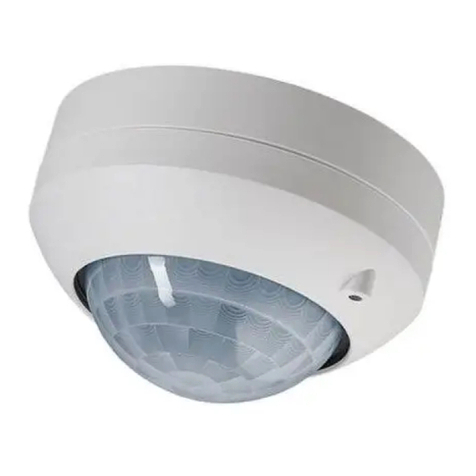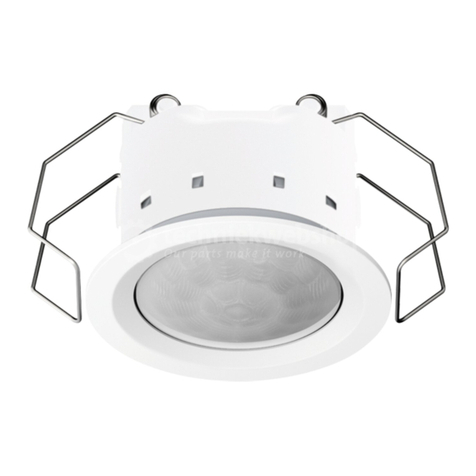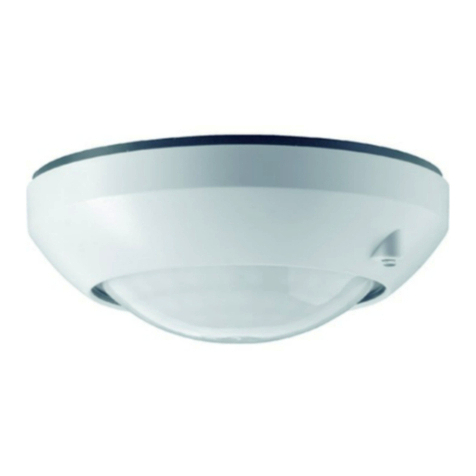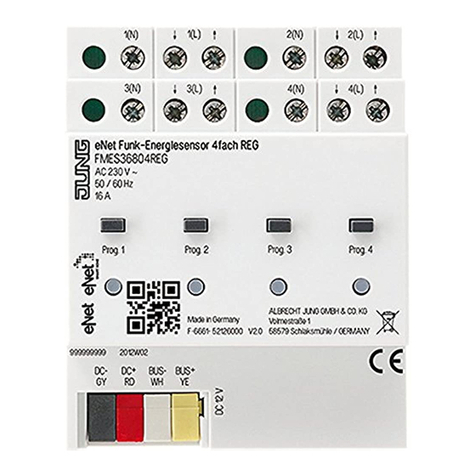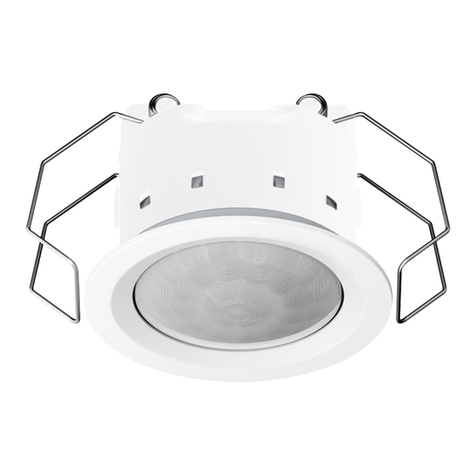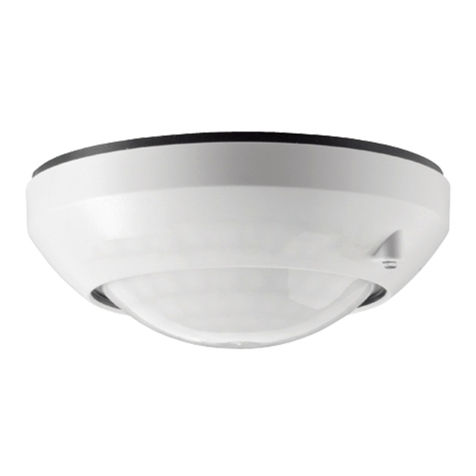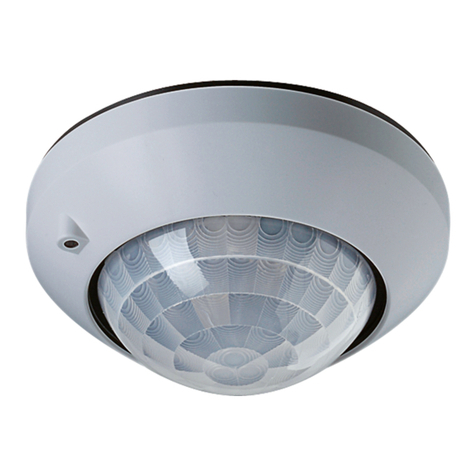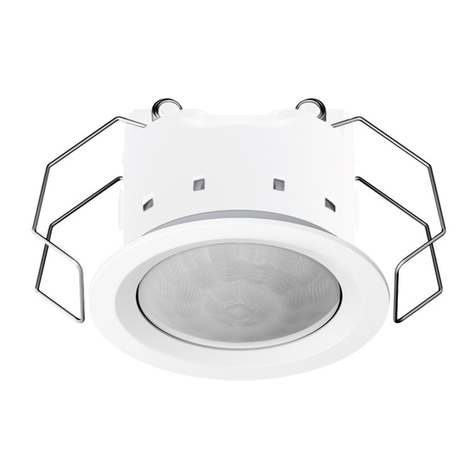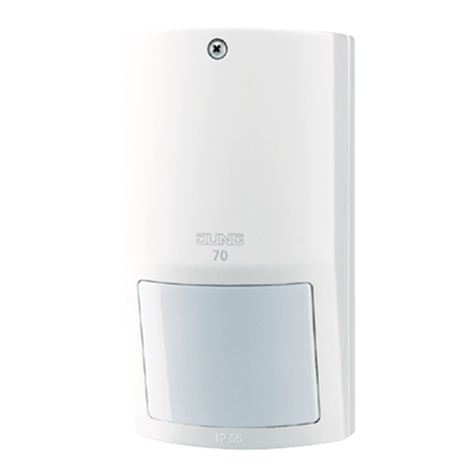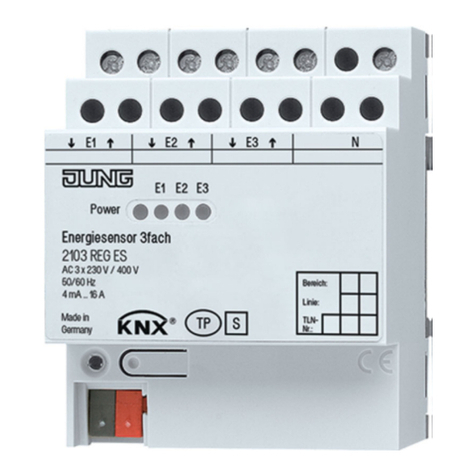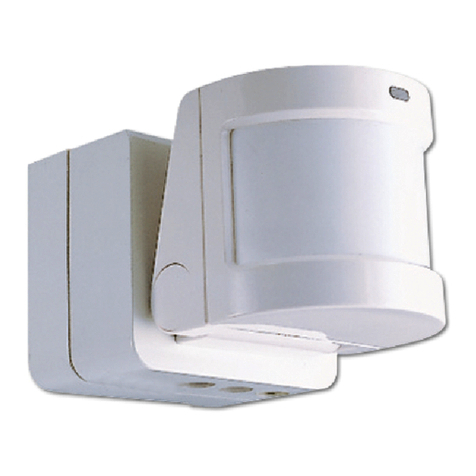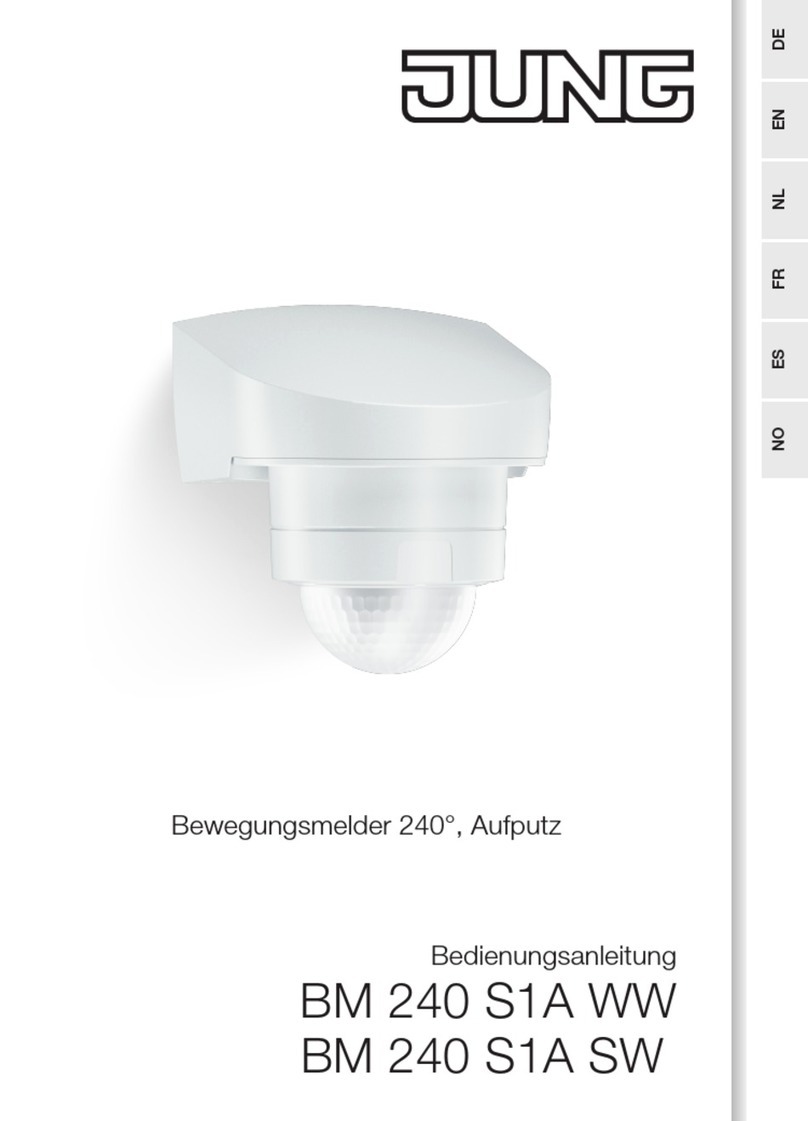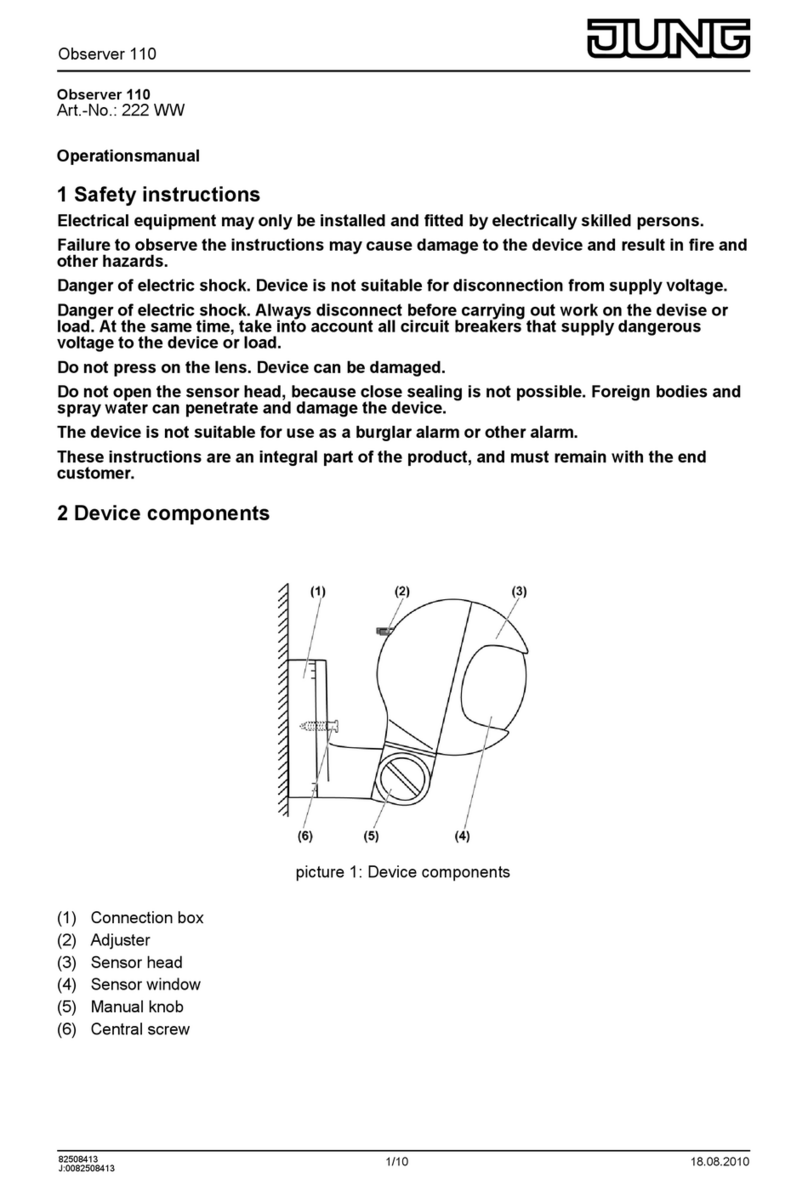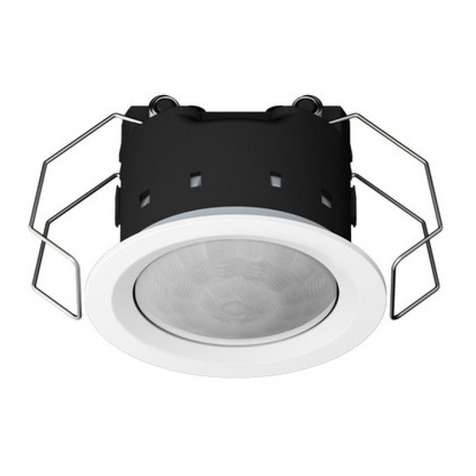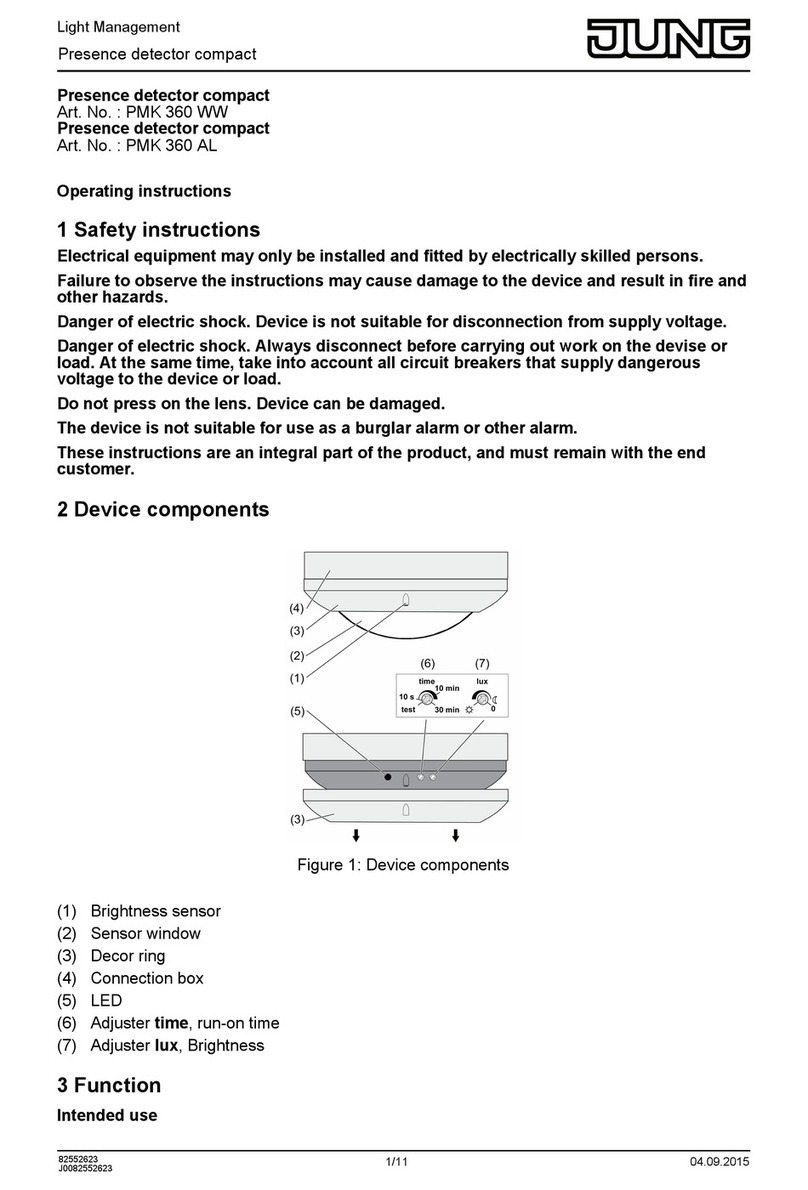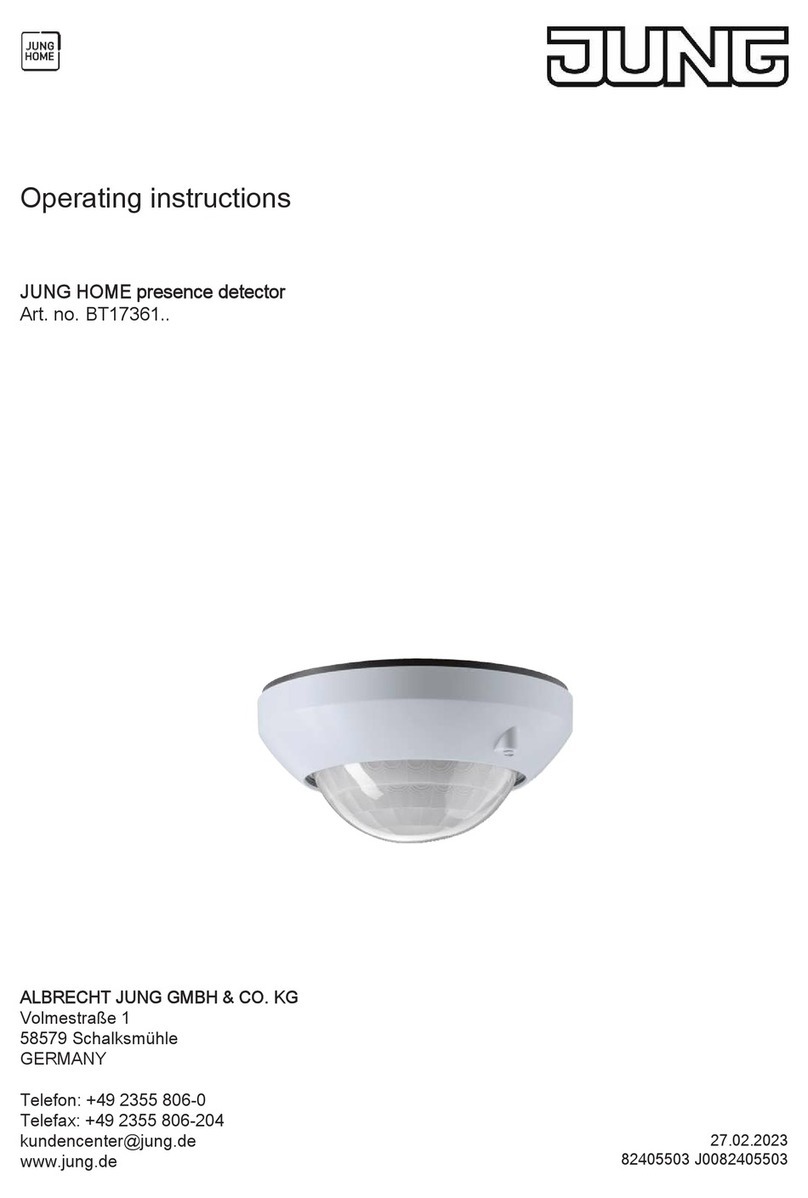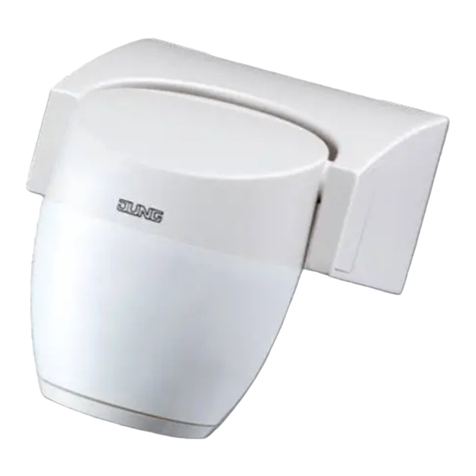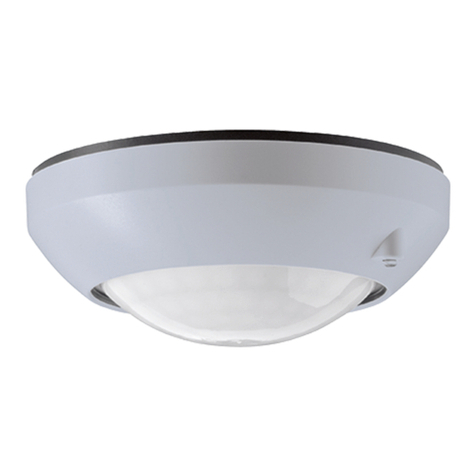
4.2 Light control with switch actuator
When the brightness drops below a setpoint and when a motion is detected the taught dimmer
actuator switches the taught switch actuator on for the duration of the set run-on time. Every
additional motion detection starts the run-on time again. The switch actuator performs a 2-point
light control depending on the brightness setpoint.
The lighting is switched off in the following cases.
- After the settable run-on time elapses.
- If the brightness actual value exceeds the brightness setpoint for by more than 100% for
approx. 15 minutes.
The run-on time is restarted every time a motion is detected. If the brightness drops below
the brightness setpoint, then the lighting switches on again.
Switching the light control on or off manually
As with the light control, the manual switching-on or switching-off takes place with a dimmer
actuator (see Light control with dimmer actuator).
Changing the brightness setpoint permanently.
The current brightness actual value can be accepted permanently into the switch actuator as
the brightness setpoint. This overwrites the brightness setpoint manually set on the presence
detector. The acceptance of the brightness actual value takes place in the same way as in light
control with a dimmer actuator (see Light control with dimmer actuator).
Switch on or switch off for 2 hours
As with the light control, the manual switching-on or switching-off for 2 hours takes place with a
dimmer actuator (see Light control with a dimmer actuator).
4.3 Light scene operation
Operating the light scene button
The actuator integrated into the light control can be integrated into additional actuators in light
scenes and into the All On and All Off function. No light control is performed.
Pressing a button Actor reaction
Press light scene button or All On button Light switches on for at least 2 minutes. When
motion is detected the run-on time of the
presence detector is started.
Press the All Off button Light switches off for 2 minutes. The 2 minutes
are started again when motion is detected.
The light control is started again by pressing the transmitter taught in the actuator briefly.
Operating the master dimming button
After a light scene has been called up it is possible to change the brightness of the entire light
scene via a master dimming button. The actuator integrated into the light control responds as
follows:
Operation Actor reaction
Press the master dimming button /\ briefly Light switches on.
Light control is active.
Press the master dimming button \/ briefly Light switches off for 2 minutes. The 2 minutes
are started again when motion is detected.
Press the master dimming button /\ for a
longer period
The light gets brighter
Press the master dimming button \/ for a
longer period
The light gets darker
5/14
82536633
J0082536633 16.08.2016
Radio Management
Radio presence detector
